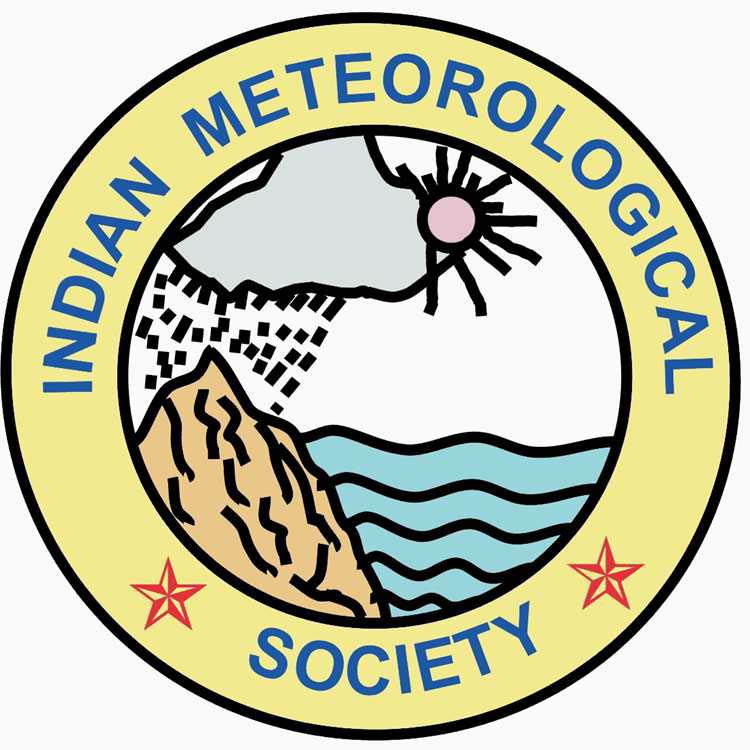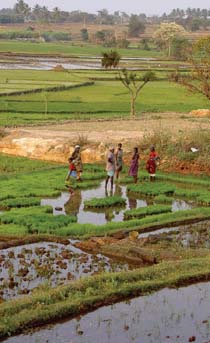Climate and Weather
Indicators of climate change in the middle Himalaya - A rapid inventory - Current Science
Posted on 22 Sep, 2011 01:22 PMThis article published in the journal Current Science presents the findings of a study that aimed at developing a rapid inventory on the impact of the recent climatic changes on the ecosystem, flora and fauna of the Himalayan region with a special emphasis on livelihoods.
"Meeting urban water challenges is matter of political will and priorities, not about technical solutions"
Posted on 17 Sep, 2011 08:55 AMGuest post by: Parineeta Dandekar
This year's World Water Week in Stockholm explored water and sanitation challenges faced by urban areas as well as the water, sanitation and equity challenges posed by urban areas. We take a look at some of the presentations and discussions that took place, especially with reference to India and South Asia.
TROPMET 2011, Indian Meteorological Society, December 14 – 16, 2011, Hyderabad
Posted on 13 Sep, 2011 01:15 PMOrganization: Indian Meteorological Society (IMS)
Date: December 14 – 16, 2011
Venue: Hyderabad

The Indian Meteorological Society (IMS) is an Indian non profit organization that promotes the advancement, dissemination of knowledge, and the application of meteorology and related sciences. It was formed in 1956 during one of the sessions of Indian Science Congress in Calcutta.
Disaster management in India – A report by Ministry of Home Affairs
Posted on 09 Sep, 2011 05:28 PMThe perception about disaster and its management has undergone a change following the enactment of the Disaster Management Act, 2005. The definition of disaster is now all encompassing, which includes not only the events emanating from natural and man-made causes, but even those events which are caused by accident or negligence.
Flood hazard zonation of Assam – An atlas by National Remote Sensing Centre
Posted on 05 Sep, 2011 03:09 PMAssam represents a highly flood-prone region characterized by severe hazards of floods. Although occurrence of flood has been an age-old phenomenon in the riverine areas of this region, the extent of damage caused by floods has increased significantly in recent years.
Forecasting agricultural output using space, agrometeorology and land based observations
Posted on 03 Sep, 2011 06:29 PMThis document presents the proceedings of the annual review meeting by India Meteorological Department (IMD) on “Forecasting Agricultural Output Using Space, Agrometeorology and Land Based Observations” (FASAL) organized at YASHADA, Pune during 1-2 August 2011.
Course on journalism and environment, Centre for Science and Environment, December 1 to 15, 2011, New Delhi
Posted on 01 Sep, 2011 10:07 AM
Organizer: Centre for Science and Environment
Venue: New Delhi
Description:
This December, strap up and brace yourselves and learn to communicate the environment-development challenges in contemporary India.
Interact with some of the county’s leading thinkers, academics, activists and development professionals on key environment and development challenges. Learn from them on ecological rights, natural resource management, food security, climate change and global environmental governance, urban growth, pollution control.
Social equity and integrated water resources management – A background paper by Global Water Partnership
Posted on 31 Aug, 2011 04:10 PMIt provides an analytical framework that policy makers and water professionals can use to bring greater clarity to the issue of social equity in their local context.
Adaptive water resource management in the Lower Bhavani project command area in Tamil Nadu – A research report by IWMI
Posted on 25 Aug, 2011 11:07 PM
To what extent farmers and water resource managers already practice adaptive management and whether it is practiced in an optimal manner or could there be areas for improvement based on recent advancements in the theory of adaptive management are some of the questions that are particularly appropriate in the light of rapid changes in river basin water use and also in relation to basin closure.
This paper draws on the development and use of water resources in the Lower Bhavani Project (LBP), with the LBP reservoir and the 84,000 hectare (ha) LBP command area. The project diverts water from the Bhavani River, a tributary of the Cauvery River in Tamil Nadu.
Seasonal prediction of the Indian monsoon - A paper from Current Science
Posted on 25 Aug, 2011 02:07 AMThis paper published in Current Science presents the results of the national project on ‘Seasonal Prediction of the Indian Monsoon’ (SPIM), which involved a comparison of the skill of the atmospheric models used in the country for prediction of the summer monsoon, in simulation of the year-to-year variation of the summer monsoon rainfall over the Indian region for 1985–2004.





